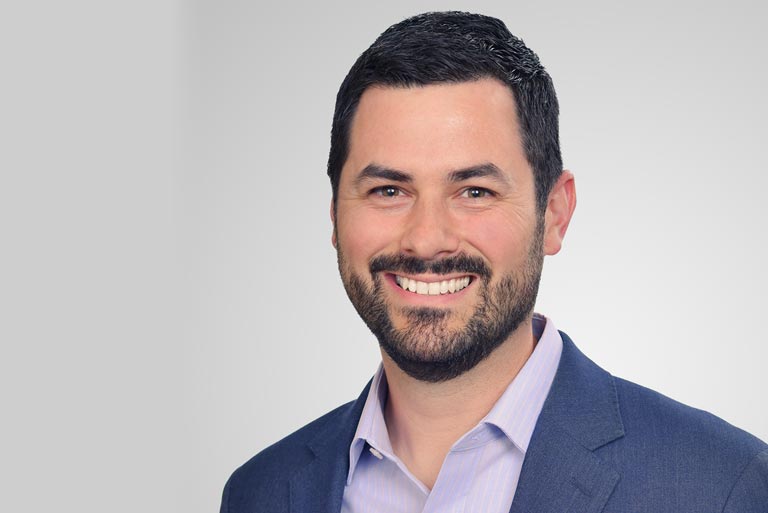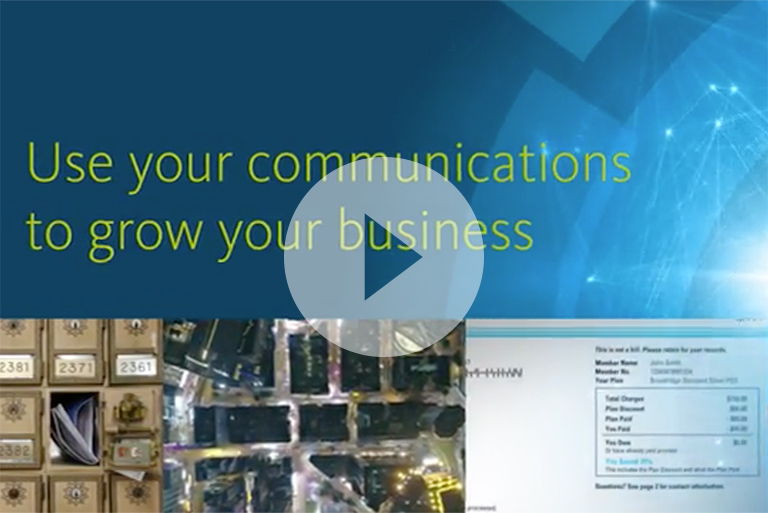Episode 9: “Diagnosing Health Insurer Communications” with Jeremy Urbas
From the trenches of a Blue Cross Blue Shield plan — where he was tasked with improving communications and optimizing member experience — to launching a health insurance communications survey in his current role leading the health communications strategy at Broadridge, Jeremy Urbas brings invaluable market perspective to our latest podcast. In this episode, Matt and Jeremy discuss how the market is evolving and the critical role of member communications.
Passion Leads to Credibility: “When I was working for a Blue Cross and Blue Shield plan, we replaced the enterprise communication system. As projects tend to go, this project went long and over budget and I was asked to get involved. So, after digging into it, I learned a ton about the absolute complexity around health insurer communications. The COO asked me to take over a centralized team and make improvements. I spent a lot of my time working on elevating those communications, centralizing the ownership, and looking at the overall member experience. After 10 years, I decided this is an opportunity to go out and help other health insurers reach their goals and help them learn the lessons that I had to learn the hard way. That’s where credibility comes in; you have to have credibility. It's one thing to have these types of conversations, to write thought leadership pieces and be out there in the market talking about it, but you'll walk away thinking, ‘Yeah, but you don't really know what I go through. You don't really know what it takes.’ But I do know; I’ve been where you are. I know what it means when you've got different owners – from membership to claims, appeals, health and wellness – and how difficult it is to wrangle in all those different stakeholders and actually create a centralized view."
Breaking Down the Myths About Health Insurer Communications: “The health insurance communications survey that we just did really challenged a lot of existing perceptions: ‘Communications don't matter; they're regulatory, just get them out the door on time; no one reads them, everyone's throwing them away; boomers want print, millennials want digital.’ We wanted to talk to members and understand their overall experience with their health insurer and the communications they receive. After surveying 1,000 members, we’re finding these perceptions are absolutely wrong. We got some really, really interesting results.”
Give Me a Good Digital Experience and I’ll go Paperless: “According to our survey, 62 percent of millennials would convert to paperless delivery if the digital experience was better. So, what does that mean? There's a lot of investment from the health insurers on their mobile app or on their website, but the enhancement is not always aligned to how convenient it is for the member to use or the quality of communications that are there. If you're trying to actually go in and find information or a letter that your health insurer sent you, it can be a really difficult experience because sometimes you're having to go through multiple layers to actually get to it. That's not an experience that's going to drive people to want to go paperless because how convenient is it to just go out to your mailbox and you get it right there, open the envelope and you have it, right? What this survey finding says is that there's an incredible opportunity to actually convert folks, especially millennials, from paper to digital, but you've got to make that investment in your mobile app and on your website. You've got to do it with a purposeful view into enhancing the efficiency at how they can get to their communications.”
The Payoffs of Communications: “From the health insurer's perspective, there are some communications that are absolutely critical that you need your members to read, like EOBs. That's a big way health insurers discover fraudulent medical billing. The member can find issues, like ‘Hey, I didn't have that procedure’ or ‘I didn't see that doctor.’ So, if your members are viewing your EOBs, then you're going to be able to uncover more of those occasions. Insurers also want to get involved and help their members increase their quality of life, improve their health, to help them navigate day-to-day – what they're eating, their exercise, overall quality of health. There's more than one reason why an insurer would want that to happen, but, in order to get to that level of relationship, you've got to come to where members are. You really have to be invested in emerging digital communication; you've got to have a strong email program. You've got to be personalized; another thing our survey revealed is how much people want personalized communications. When you're making that investment, that's when you can start to have that relationship. That's when members start to view what you're producing more regularly. That's when you can start seeing the benefits of these health and wellness programs and where you can start to see the benefits of the money that you are spending to generate these communications.”
Make It Whole to Make It Count: “One of the greater challenges that health insurers face in transforming their communications is that they don't have centralized ownership and aren’t looking at the overall end-to-end member experience. Most health plans have folks that are focused on digital and folks that are focused on the member experience, but they are not often looking at the communication experience of the member. It's common, it happens all the time, and that's because insurers aren’t making communications a centralized focus and they are not doing the mapping and really doing the work to understand all those touch points. One of the things that I really recommend to health insurers that I talk to is decide whether you want to create a communications group that is responsible for all of that or if you want to build that into your member experience group. It's really important. When I took over that role at the Blue, one of the things I looked at was how many disparate systems were producing letters. At the time, there were four. So, I started this project where we started grabbing all the letters that could possibly go out to a member. We were in the 200s when it came to different unique letters that were going out the door. The difference in branding was remarkable. You had some that looked like they hadn't been redone since the 1970s; there were different logos and different designs. So, looking at just that member experience, if you're getting these letters, you're not making that connection quickly, ‘Oh, this is from my insurer.’ We also found that there was such overlap. There were letters that included the necessary information, making another letter completely unnecessary. We ended up getting down to under 100 letters. The cost savings were astronomical – not to mention that you're able to retire some of these systems and solutions that are costing money. That wasn't possible unless there was someone who was looking at the communications holistically. And that's just the tip of the iceberg.”
Never miss an episode: Click the icon to subscribe to the Reimagining Communications podcast on the channel of your choice.












